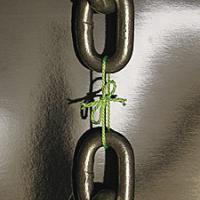
Uncovering a Tactical Weakness
Tactics naturally flow from “tactical weaknesses” – an unguarded piece, an exposed king, two heavy pieces on the same line, etc. Often this weakness is out in the open and the only question is if it can be utilized. But occasionally a normal chess position arises which has a hidden weakness buried in it. A surprising turn of events uncovers this weakness.
In the following game the French Defense led to a normal-looking position where Black had some pressure on the queenside and White was attempting to get some play against the black king. It was a fairly closed position, and the poorly-guarded knight on c6 seemed completely irrelevant. However, a sudden sacrifice opened the game up to exploit this momentary tactical weakness. Black lost control of the game, and the rest of it revolved around this one theme, until the very end. After the tactics began, it turned out that there was no way out for Black – a fact that made me feel a little sorry for him. Usually one mistake won’t lose the game by force, but this time it turned out to be the case!
White was exploiting the knight on c6 from the beginning to the end of the combination, which began from a normal-looking position where it seems White just has a little more space in a typical French defense.
By the way, do you think I saw to the end of the game when I began the combination (at 21.fxe6)? Not a chance, because I didn’t need to. When I played 21.fxe6 (which I would not play without having the follow-up planned, since releasing the tension would give away my chances of playing f5-f6 at some point) I saw up to 25.dxe5, and knew that I would have an advantage there in any case, due to the more exposed black king and various weaknesses. I also sensed that there would be further tactics to exploit the awkward black pieces. But it was not necessary to see everything before making the decision to play the combination. Only when I got to the position later did I see the 26.e6 and 27.Nd4 idea, and at that point I also saw 28.Qxc6, since without that move White would have only an equal position. Keep in mind that when you calculate in chess, it is not necessary to see to the very end – you only have to see enough to make a decision. If you try to see everything all the time, you will tire yourself out and get into time pressure, leading to bad results.

